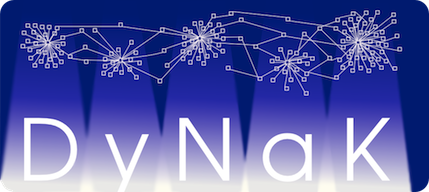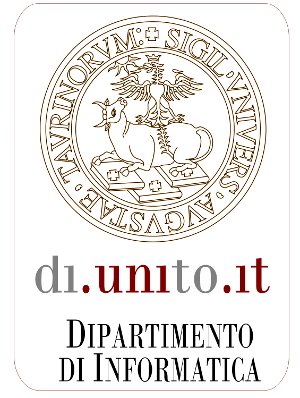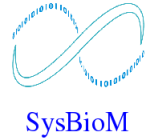| Workshop on Dynamic Networks and Knowledge Discovery (DyNaK 2010) |
 |
Barcelona, Spain, September 24, 2010
Modeling and analyzing networks is a major emerging topic in different research areas, such as computational biology, social science, document retrieval, etc. By connecting objects, it is possible to obtain an intuitive and global view of the relationships between components of a complex system.
Nowadays, the scientific communities have access to huge volumes of network-structured data, such as social networks, gene/proteins/metabolic networks, sensor networks, peer-to-peer networks. Most often, these data are not only static, but they are collected at different time points. This dynamic view of the system allows the time component to play a key role in the comprehension of the evolutionary behavior of the network (evolution of the network structure and/or of flows within the system). Time can help to determine the real causal relationships within, for instance, gene activations, link creation, information flow.
Handling such data is a major challenge for current research in machine learning and data mining, and it has led to the development of recent innovative techniques that consider complex/multi-level networks, time-evolving graphs, heterogeneous information (nodes and links), and requires scalable algorithms that are able to manage huge and complex networks.
DyNaK workshop is motivated by the interest of providing a meeting point for scientists with different backgrounds that are interested in the study of large complex networks and the dynamic aspects of such networks. It aims at attracting contributions from both aspects of networks analysis: large real network analysis and modelling, and knowledge discovery within those networks. Even though each type of real complex networks has some peculiarities related to its specific domain, many aspects of the modeling and mining techniques for such networks are shareable. For instance, gene networks and social networks share a common architecture (scale-free), and involve similar data mining and machine learning methods: module/community extraction, hub single-out, information-flow analysis, missing link detection and link prediction.
Special session on Sentiment Analysis and Opinion Mining
Every day, millions of people write their opinions about any issue in social media, such as social news sites, review sites, and blogs. The distillation of knowledge from this huge amount of unstructured information is a challenging task. Sentiment Analysis and Opinion Mining are two areas related to Natural Language Processing and Text Mining that deal with the identification of opinions and attitudes in natural language texts. In the Opinion Mining session of DyNaK we are interested in research results from academics and practitioners in the task of extracting knowledge from user generated contents, and how time affects to this analysis.
Topics of interest
Contributions to the DyNaK workshop should be focused on this (non exhaustive) list of topics:
Methods:- Network inference from raw data
- Graphical models
- Graph mining algorithms
- Graph kernel algorithms
- Relational learning algorithms
- Matrix/Tensor methods
- Information retrieval algorithms
- Bayesian methods
- Evolutionary clustering
- Mining and learning from heterogenous domains
- Bisociative information discovery
- Clustering/Co-clustering/Biclustering
- Pattern mining and clustering with constraints
- Community detection/Module extraction
- Analogies between social and biological networks
- Opinion Extraction and Classification
- Blogs Analysis and Social Search
- Temporal Sentiment Analysis
- Irony and Plagiarism detection in Opinion Mining
- Recommender Systems
- System biology: regulatory gene networks, protein-protein interaction, miRNA networks, metabolic networks
- Social networks: folksonomies, digital libraries, information networks, social media, collaborative networks
- Sensor networks, peer-to-peer networks, Web, agent networks, body sensor networks



